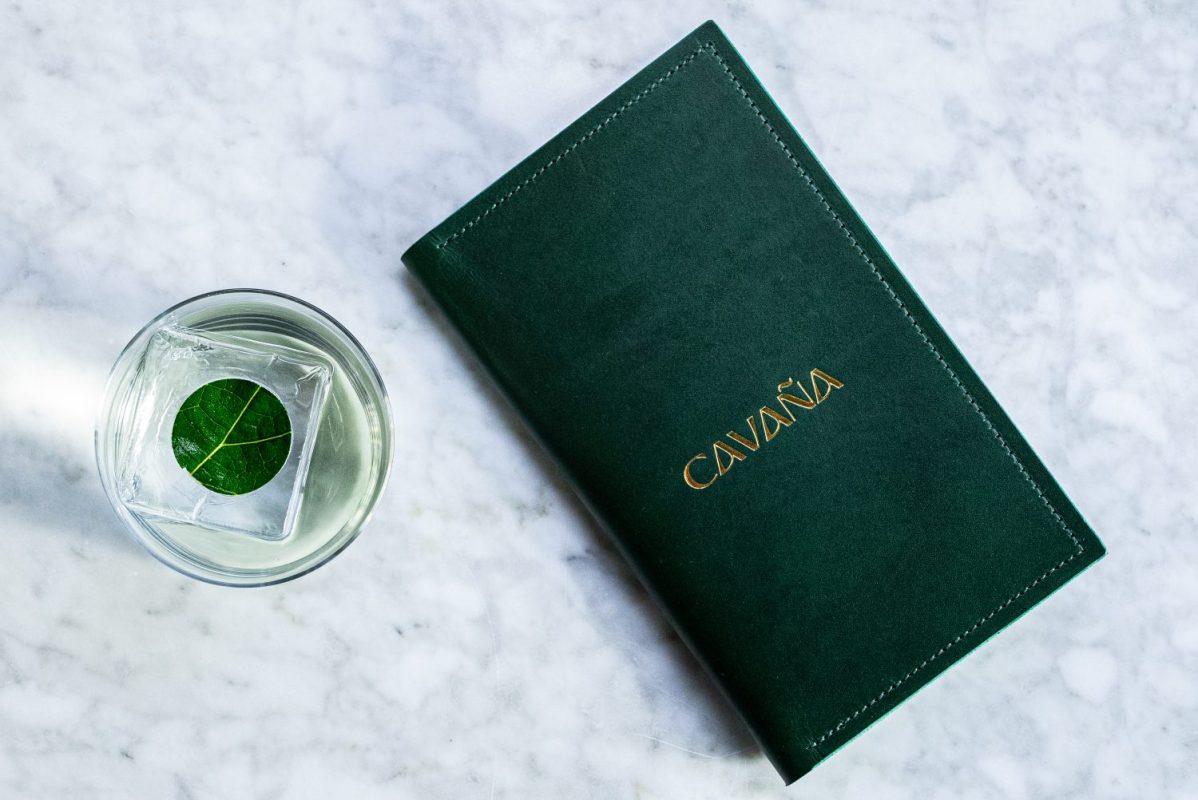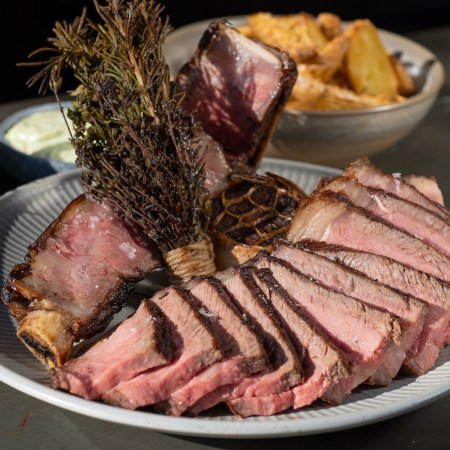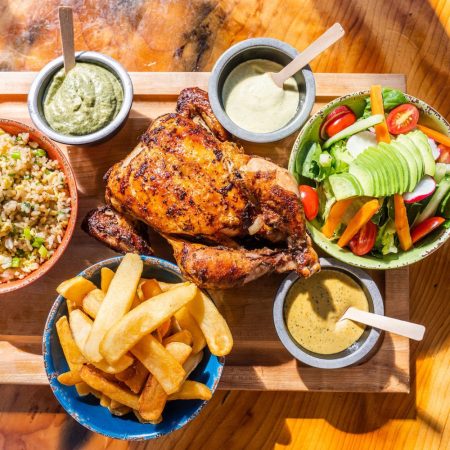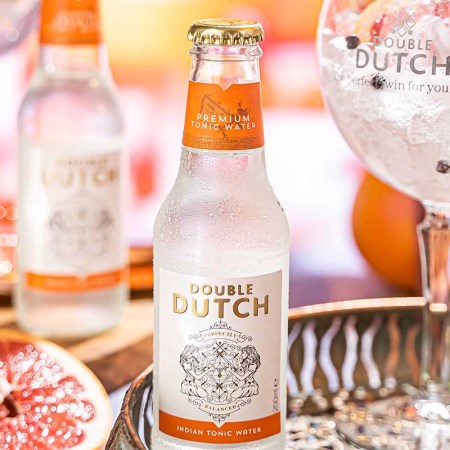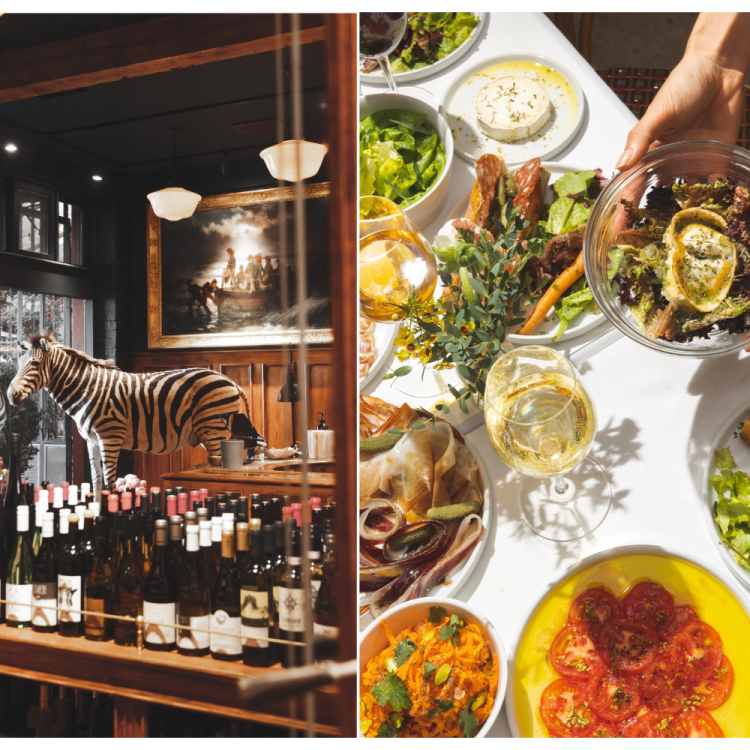Clarified milk punches have been popping up on cocktail menus all over the Bay Area, but this highly technical cocktail is nothing new. Originally developed as early as the 1700s, modern clarified milk cocktails are nevertheless as innovative as they are silky smooth.
Clarified milk punches got their start as a means of preservation, earning a spot alongside dry-cured salami or yogurt as stabler versions of goods that manage to be as — if not more — delicious as the original. To make these 18th-century punches, milk was added to an alcoholic mélange and then forced to curdle, often by introducing citrus. Unappetizing as the mix may seem at the outset, once the curds are strained off, what remains is an ultra-clear drink with a velvety texture and the added benefit of being shelf-stable.
“Milk punch pre-dates modern refrigeration and is a great way to preserve fresh ingredients,” says Stephanie Gonnet, a partner at West Bev Consulting, who helped craft the bar program at The Restaurant at North Block. “In that way, they’ve been around longer than our 50 states — you can find Benjamin Franklin’s milk punch recipe online [Ed note: Here it is!]. It’s a boozy one!”
The time-tested technique has been experiencing a modern resurgence, something Trevor Tyler, Vice President of Beverage Operations at Eureka! Restaurant Group & La Popular, attributes, at least in part, to TikTok and Instagram, platforms rendering the highly technical process a bit easier to wrap one’s head around.
“I felt like there was a lot of secrecy or gatekeeping around milk punches when we were first introducing them on our menus,” he says. “If I would have added easy access to some strategies and tactics that are out there today, it would have been a lot easier.” Indeed, video and imagery makes this technique far more approachable, something that led Tyler to produce his own videos for staff bartenders when he first added milk punches to his menus in 2017.
It’s a process that certainly takes time behind the scenes, but for Carson Dean, bar manager at Akikos, the rewards are worth it come service time.
“Milk punches are very useful as a drink that is 99 percent prep and one percent pour-and-serve,” he says.
Cavaña’s director of beverage, Emilio Salehi, agrees.
“Citrusy and fruit-driven cocktails are always popular with guests, but unfortunately that means a whole lot of shaking for bartenders,” he says. “Milk punches are great because they allow us to satisfy popular flavor profiles with the elegant presentation and expedient service of a stirred drink.”
TikTok aside, the current uptick in milk punches may have something to do with our ever-increasing awareness of food waste and the importance of eating seasonally.
“Milk punches are a really great way to transform peak-season produce into something that is shelf stable and retains the essence of the produce,” says Salehi. “In January, I went crazy on blood oranges and caracaras, now in late spring I’m looking at berries, rhubarb and sweet peas. For summer, I get really excited to work with musk melons and stone fruit.”
The trend is also likely linked to an uptick in more technical methods among modern mixologists.
The 27 Best Concerts in San Francisco This Summer
From TikTok superstars to Jeff Goldblum and The Mildred Snitzer Orchestra, there’s something for every kind of music fan“There has been a resurgence of the technique as bartenders are taking a more culinary and involved approach to cocktail making,” says Gonnet. “The texture is unparalleled, and you can clarify any cocktail, so it makes sense to see it peppered all over cocktail menus.”
Eager to stand out from the melee, many bartenders are also deviating from the overproof Jamaican or navy-strength rum at the heart of a classic milk punch to put their own spin on the classic, embracing other base spirits from bourbon to mezcal and more.
“Any high-proof spirit works well,” says Dean, who notes that spirit strength is naturally tempered by the milk-wash.
“Milk punches end up softening a lot of bold flavors while still retaining their essence,” adds Gonnet, who notes that powerful liqueurs and amari are exceptional when clarified in this way. Salehi adds oaked spirits like rum and cognac, whose spicy notes play particularly nicely in a milk punch.
“I’ve most recently been focused on clarifying fruit-forward mezcal cocktails for a more unique end-product,” he adds.
There are even ways to make a plant-milk punch — specifically with coconut milk, which, Tyler says, works best of all of the vegan substitutes.
“The best dairy-free milk punch I made was with coconut milk paired with mezcal, blood orange, lapsang tea and lime,” adds Gonnet. “Compared to other alt-milks out there, coconut milk imparts a lot of flavor that rounds out a lot of [other] intense flavors.”
Though if your milk aversion is less to do with ethics and more with digestion, Dean notes that you need not steer clear of this particular trend.
“There is no lactose or milk left after the clarification, therefore it’s friendly to dairy/lactose allergies and intolerances,” he says.
Both he and Salehi note, nevertheless, that despite attempts to the contrary, this style of drink does indeed benefit from the Real Deal. According to Dean, dairy-free milks take twice as much time to make as versions with cow’s milk, and for Salehi, the lackluster result isn’t worth the hassle.
“I’ve experimented with plant-based milks but I must admit that I’ve yet to find anything that curdles and clarifies as well as full-fat dairy milks,” he says.
Of course, that doesn’t stop you trying. Our bartenders even have a few tips to offer to curious home mixologists.
First up, opt for whole cow’s milk.
“The fat ratio is just right, not too much or too little,” says Dean. “The milk should be 20 percent of your volume. This means you could make a single serving drink and test it out with the whole milk ratio before committing to more.”
After testing loads of different strainers, from cheesecloth to coffee filters, Tyler has found that “a regular fine mesh strainer and a double layer of cheesecloth were the best options.”
But perhaps the most essential tip? Patience.
“The key to clarification is actually more about letting the milk fully curdle and trying not to disturb the curds during the process,” says Tyler. “I find that when you add the milk to the punch, the best thing to do is let it sit for an hour or two. When it comes time to strain it’s really important that the first 12 to 16 oz that come out of the strainer are then reintroduced back on top of the punch to be restrained, as the first bit of the punch will come out hazy. Once the curds have settled at the bottom of the cheesecloth, they will act as another level of filtration to get the best clarity.”
Luckily, to hear Salehi tell it, you have more than enough time to get it just right.
“While some cocktail styles and methods will experience temporary popularity,” he says, “I feel that the clarified milk punch is here to stay.”
Four Milk Punches to Try in the Bay Area
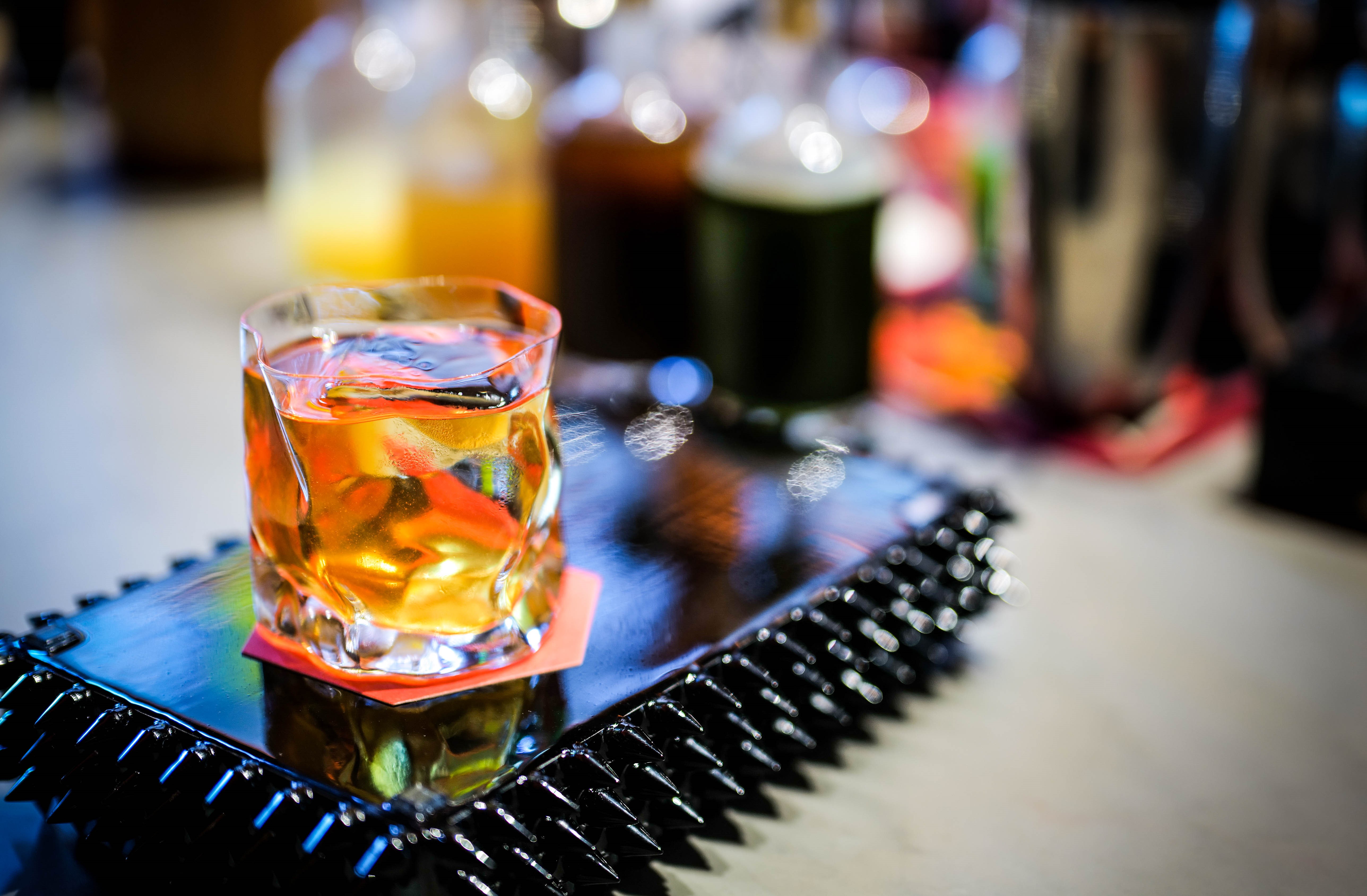
Dram N Bass at Akikos
This milk punch cocktail boasts Scottish roots and a rooibos tea twist. It begins with a 12-year-old Benriach Scotch, a peated Speyside single-malt Dean says is “truly one of a kind.” Loaded with subtle smoked honey and heather character, it’s paired with both orange and blood orange in an evocation of a Prohibition-Era Blood and Sand that takes full advantage of the vanilla and spice notes of the rooibos tea.
“A high acid content is very necessary for the clarification process of the milk curdling, leading me to mix a 3:1 ratio orange juice to lemon juice,” says Dean. “After adding the Italian vermouth, the blend was tasting great and in no way needed any addition of cherry, liqueur or more sweetness.”
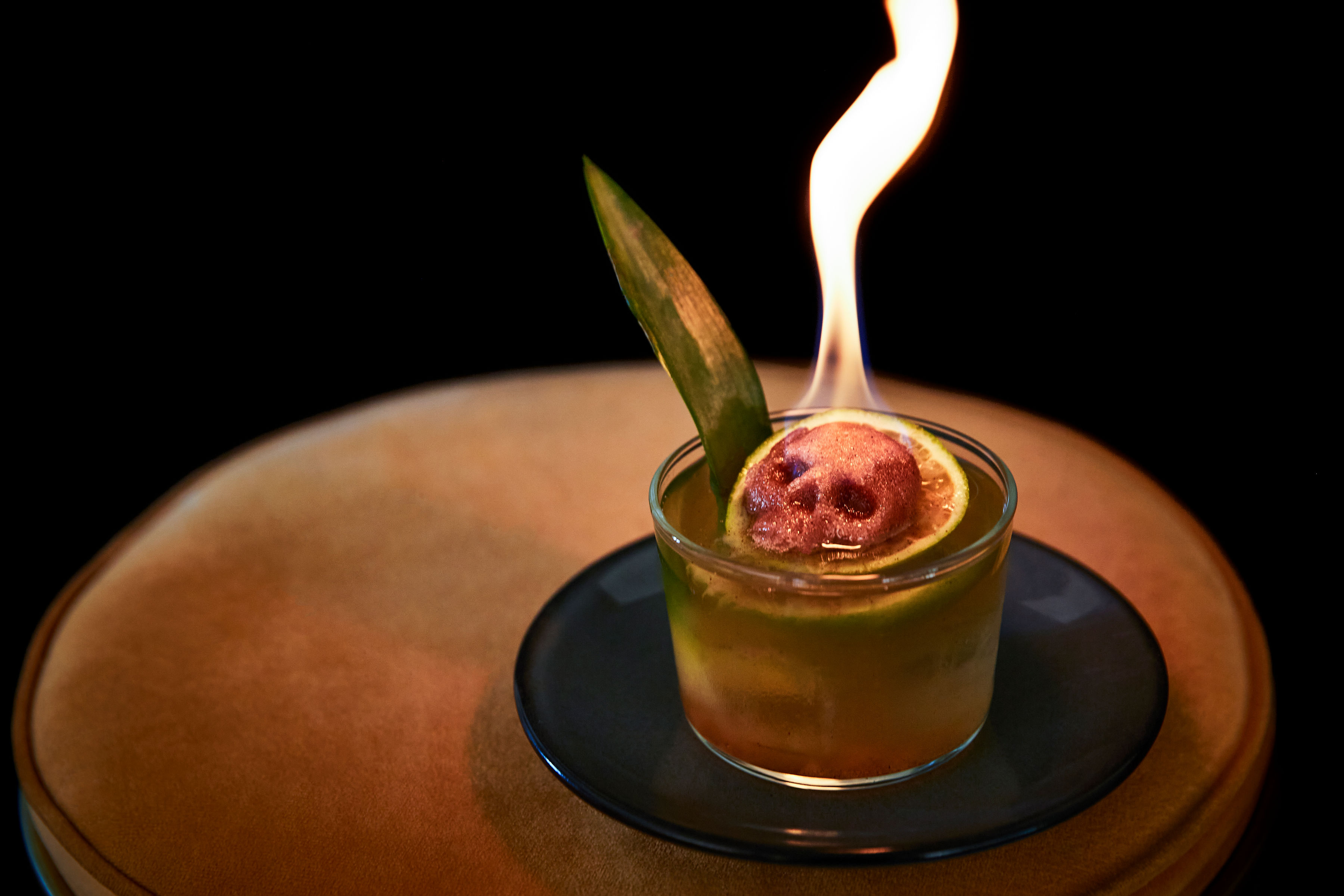
Yucatán Toucan at La Popular
This smoky sipper is a riff off a classic tiki cocktail known as a Jungle Bird.
“We replace the traditional rum with mezcal and use an acid-adjusted pineapple juice as well to help the milk curdle and balance out the sweetness of the drink,” explains Tyler. “The cocktail is topped with a cinnamon sugar skull that we light on fire, and guests are instructed that they can mix in the cinnamon sugar skull if they would like to adjust the sweetness of the cocktail — or remove the skull and enjoy the cocktail on its own.”
Kiwi Hoja at Cavaña
This milk punch truly toys with expectations, as the clear liquid served over a large piece of clear ice actually packs a wallop of flavor. To hear Salehi tell it, it was “an instant hit due to its beautiful, minimalist appearance with a maximalist flavor profile.” To make it, mezcal, singani, hoja santa, kiwi, lime and blanc vermouth unite for a fruity, smoky, aromatic drink.
“The hoja santa we source locally has such a unique flavor that plays so well with the tropical kiwi and sweet minerality of the mezcal,” says Salehi. “I have a couple other recipes in mind, but I don’t know if I’ll be able to remove the Kiwi Hoja from our menu any time soon.”
Orchard Punch at The Restaurant at North Block
At The Restaurant at North Block, the cocktail program takes its inspiration from Californian bounty, so for Gonnet, “the idea of doing a stone fruit and nut cocktail was a no-brainer.”
Her Orchard Punch takes advantage of luscious, fruity flavors by combining apricot black tea with almond orgeat, armagnac, lemon and Brucato Orchards, an amaro with apricot, walnut, citrus and cinnamon notes.
“Brucato Orchards was a perfect amaro to throw into the mix, as well as Bernard Abricot Liqueur — made from apricot pits and tastes like marzipan!” she says. “Some orange blossom, a rum blend and a little bit of Armagnac helped accentuate the flavor profiles we wanted to achieve.”
The apricot tea is oversteeped purposefully for even more flavor.
“I’ve always been a big fan of apricot black tea and figured that oversteeping it would be a great application in a milk punch, as the fat clarification would help tame the super tannic notes.”
Join America's Fastest Growing Spirits Newsletter THE SPILL. Unlock all the reviews, recipes and revelry — and get 15% off award-winning La Tierra de Acre Mezcal.
